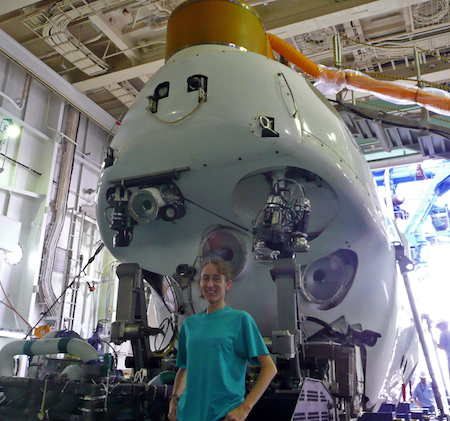NEW BEDFORD, Mass., — November 25, 2013 — The following was released by the New Bedford Ocean Explorium:
 Global Voice returns to the Ocean Explorium on Wednesday, December 4, with Dr. Stace Beaulieu, Biology Research Specialist at the Woods Hole Oceanographic Institution (WHOI). Dr. Beaulieu will discuss her study of animals at the deep seafloor level, including tubeworms, snails, and crabs at deep-sea vents. Dr. Beaulieu has visited the deep seafloor in person, diving in the submersibles Alvin and Shinkai 6500, and has used remotely-operated vehicles.
Global Voice returns to the Ocean Explorium on Wednesday, December 4, with Dr. Stace Beaulieu, Biology Research Specialist at the Woods Hole Oceanographic Institution (WHOI). Dr. Beaulieu will discuss her study of animals at the deep seafloor level, including tubeworms, snails, and crabs at deep-sea vents. Dr. Beaulieu has visited the deep seafloor in person, diving in the submersibles Alvin and Shinkai 6500, and has used remotely-operated vehicles.
Dr. Beaulieu has conducted research at eastern Pacific vents, including studies of the re- colonization of animals after volcanic eruptions at the seafloor, and her research in the western Pacific includes studies at vents in the Marianas Trench Marine National Monument.
Dr. Beaulieu, who has been at WHOI since 1998, earned her Doctorate at Scripps Institution of Oceanography, UCSD, and her Bachelors and Masters degrees from Stanford University.
Ocean Explorium doors will open at 6:00 pm, and the talk will begin at 6:15 pm. Admission is $5 for members, $10 for non-members, $8 for seniors, $3 for children.
Attendees are invited to continue the conversation at Brick Pizzeria Napoletana, and enjoy a 20% discount on food and soft drinks, just for Global Voice, immediately following the talk.
The Global Voice adult evening speaker series continues, perhaps every other month, through Spring of 2014. Visit the Ocean Explorium website, oceanexplorium.org, for more information.
